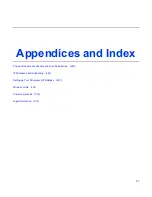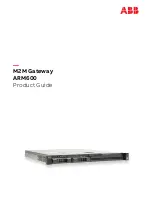
96
Appendix B
IP Addresses and Subnetting
This appendix introduces IP addresses and subnet masks.
IP addresses identify individual devices on a network. Every networking device (including computers, servers, routers,
printers, etc.) needs an IP address to communicate across the network. These networking devices are also known as
hosts.
Subnet masks determine the maximum number of possible hosts on a network. You can also use subnet masks to divide
one network into multiple sub-networks.
Introduction to IP Addresses
One part of the IP address is the network number, and the other part is the host ID. In the same way that houses on a
street share a common street name, the hosts on a network share a common network number. Similarly, as each house
has its own house number, each host on the network has its own unique identifying number - the host ID. Routers use the
network number to send packets to the correct network, while the host ID determines to which host on the network the
packets are delivered.
Structure
An IP address is made up of four parts, written in dotted decimal notation (for example, 192.168.1.1). Each of these four
parts is known as an octet. An octet is an eight-digit binary number (for example 11000000, which is 192 in decimal
notation).
Therefore, each octet has a possible range of 00000000 to 11111111 in binary, or 0 to 255 in decimal.
The following figure shows an example IP address in which the first three octets (192.168.1) are the network number, and
the fourth octet (16) is the host ID.
Summary of Contents for VFG6005
Page 23: ...14 22 Enable DHCP or Static IP ...
Page 30: ...21 ...
Page 44: ...35 6 2 ADVANCED SETUP 3 Click on Wireless Advanced tab You will see the following screen ...
Page 63: ...54 7 8 2 Add VPN IPsec Rule 1 Click on Add tab You will see the following screen ...
Page 85: ...76 10 4 LOG 1 Click on Admin Log tab You will see the following screen ...
Page 104: ...95 ...
Page 137: ...128 Interrupt 10 Base address 0x1000 root localhost ...
















































